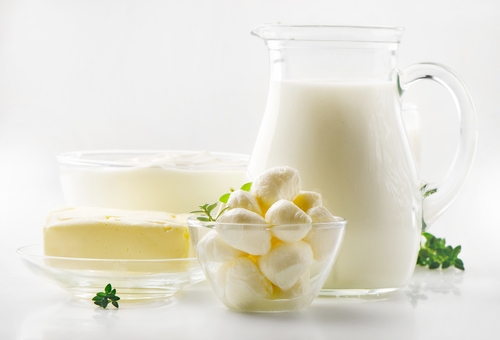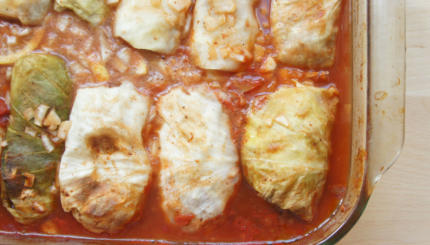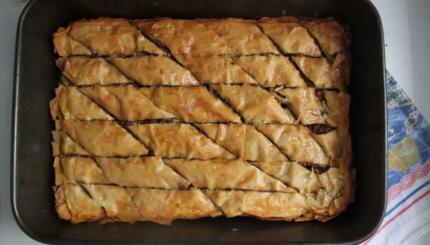Recently I saw a recipe online that looked delicious…but it called for gelatin. One of my all-time favorite Passover dessert recipes calls for several different kinds of dairy, which is problematic when you’ve just finished an enormous meat meal. And then there’s the problem of being a vegetarian, and constantly inundated with beautiful recipes for chicken, Turkey, and even ham.
So what’s a kosher keeping vegetarian to do? Well, I’ve come up with some rules and tricks for making a treyf recipe kosher.
1. Avoidance/Deletion
The number one way to get around the problem is to choose a different recipe, or just leave out the non-kosher ingredient. Google is your friend, and will help you if you need to find, say, a non-dairy turkey recipe, or a recipe for chocolate mousse that you can serve after a meat meal. Alternately, if the non-kosher ingredient is minor, you can just opt to roll the dice and try the recipe without that ingredient. (Ultimately, that’s what I decided to do with the gelatin recipe. Results pending.)
2. Margarine and Butter
When I was growing up, we never kept butter in the house. We only ever had margarine, and that was what we cooked with for all desserts. It wasn’t until I was in grad school that it occurred to me that margarine probably wasn’t any better for me than butter, and that since I was a vegetarian, I should try some butter. What followed was nothing short of a revelation. Butter is amazing. It’s completely fabulous. BUT I had learned growing up that you can make many fabulous desserts using margarine, and while some snobs will adamantly refuse to use a butter substitute under any circumstances, I respectfully disagree. Should you be eating tons of margarine every day? No. But if you’re trying to make a nice dessert (or a Thanksgiving turkey) and you can’t use dairy, it’s okay to get on the margarine train every once in a while. As margarines go, Earth Balance is the best. If you really can’t abide margarine, it’s usually okay to substitute canola or olive oil, about ¼ cup for every ½ cup of butter instructed in the recipe.
The Nosher celebrates the traditions and recipes that have brought Jews together for centuries. Donate today to keep The Nosher's stories and recipes accessible to all.
3. Milk Substitutes
Many a fine dessert recipe call for milk, buttermilk, or cream. Happily, we live in the days of soy milk, rice milk, coconut milk, and many many other alternative “milks.” I freely substitute these for milk in recipes where I need to make something pareve. I have friends who say that they won’t ever substitute anything for cream, but I’m not that classy—I will use some vanilla soymilk and call it a day.
4. Meat Substitutes
There are so many delicious meat substitutes out there I don’t even know where to start. I love Morningstar Farms, particularly their chicken substitues, and their ground beef substitutes. Many of my fellow vegetarians swear by tofu, but personally, I find it usually kind of unfulfilling. That said, I still use it in a pinch, and if properly marinated and cooked it can be lovely. My favorite, though, is a new discovery—Field Roast vegan sausages. Not yet certified kosher, these sausages are shockingly fantastic. I love them with eggs in the morning, in veggie pies for dinner, and roasted as a side dish. Seitan is also a fantastic meat substitute with a more substantial texture than tofu. The thing is, even though some meat substitutes are great tasting, they don’t really taste like meat, and I don’t think I’d serve any of them solo as a main course the way one could serve a chicken. I say limit meat substitutes to dishes where the meal is part of something greater. And experiment to see which of these you like the most.
5. Cheese substitutes
So, these exist, but I can’t really recommend them. If you’re looking at a meat recipe that calls for cheese, I would just use another recipe. That said, there are some people who love vegan cheese, so it’s worth it to try and see how you feel.



